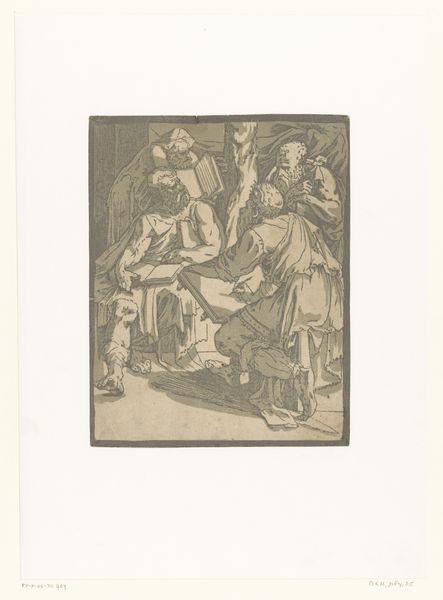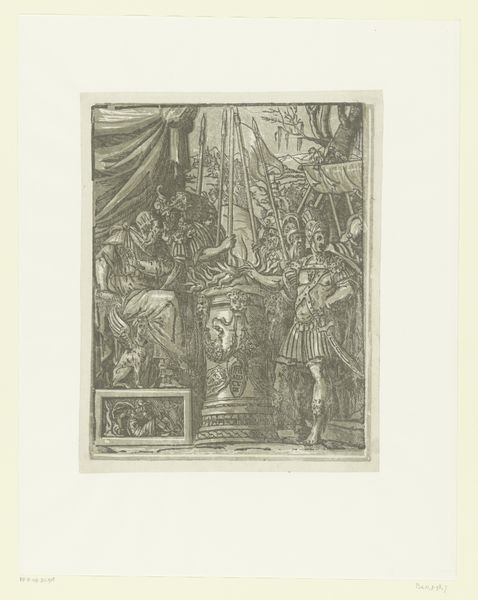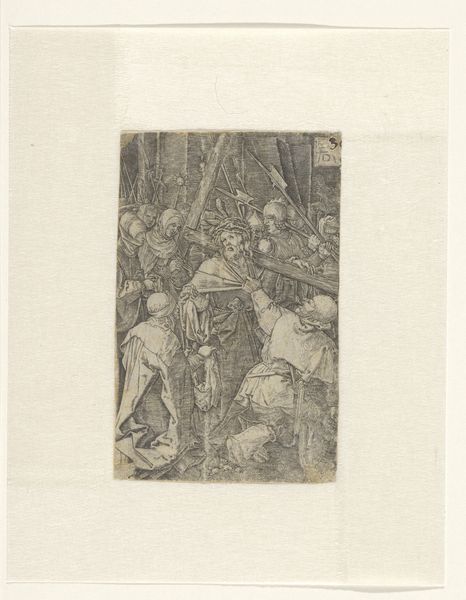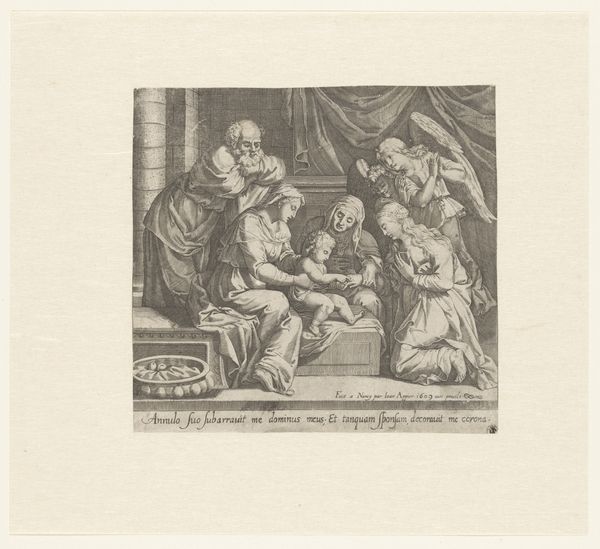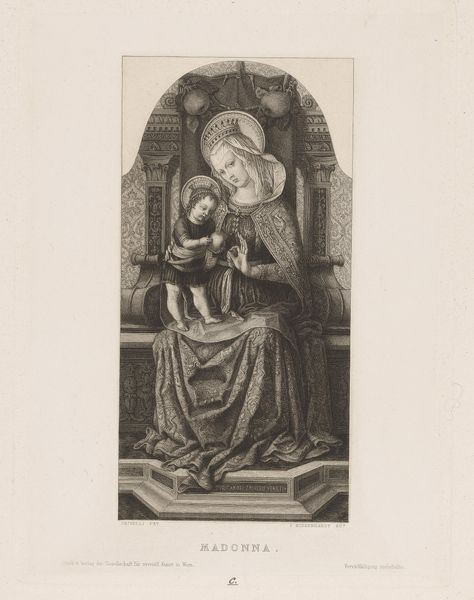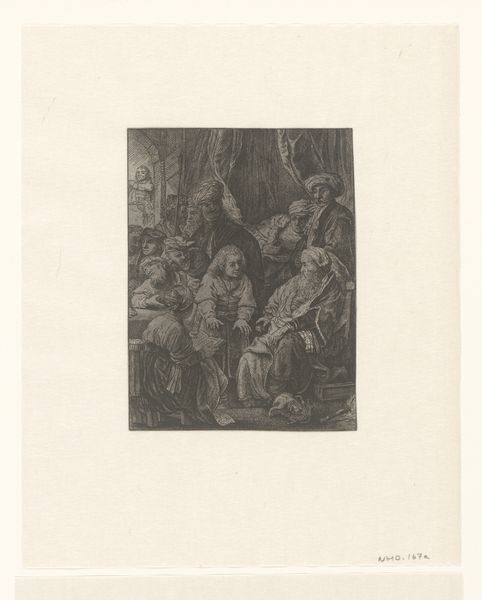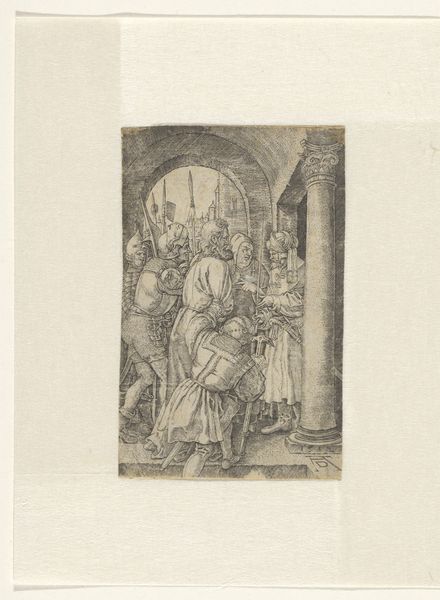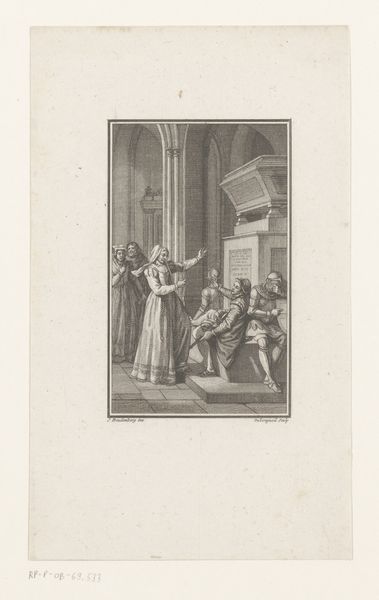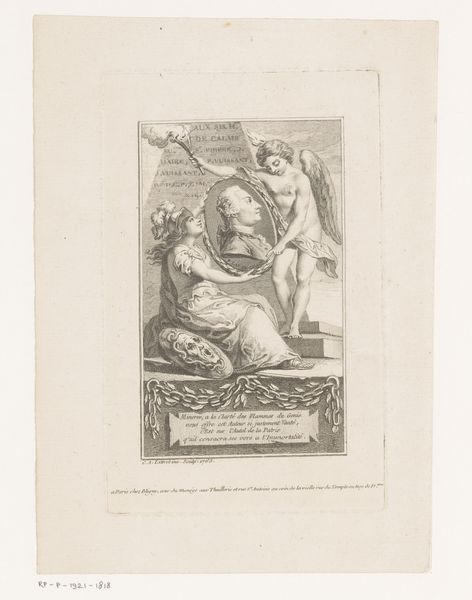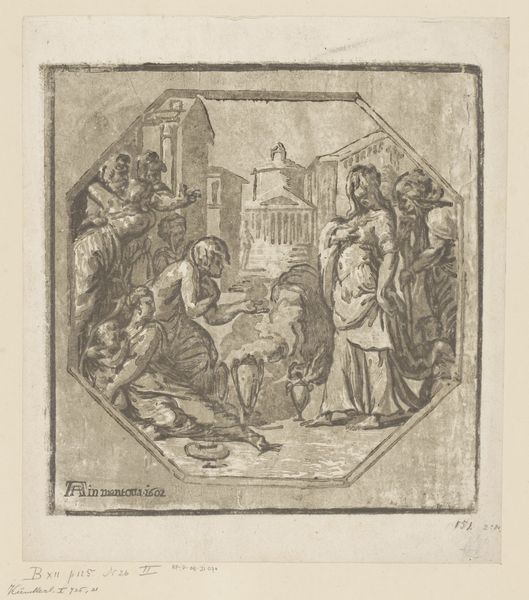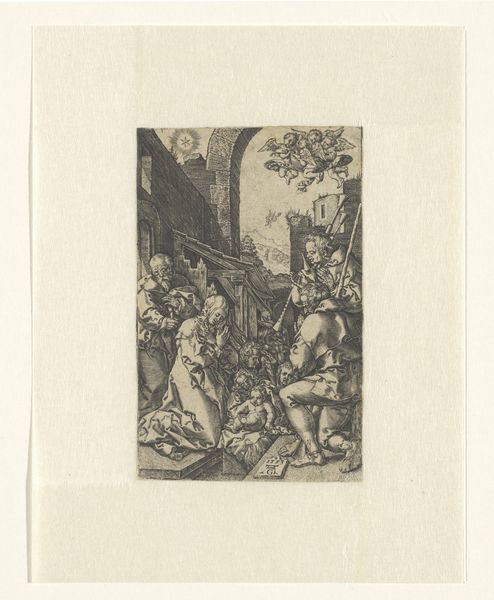
Dimensions: height 115 mm, width 73 mm
Copyright: Rijks Museum: Open Domain
Curator: Gazing upon Albrecht Dürer’s “Ecce Homo” from 1512, displayed here at the Rijksmuseum, one immediately feels a sense of... well, quiet dread. Editor: It's remarkable, isn't it? Dürer, through the precise technique of engraving, presents us with an incredibly potent scene. Look at the stark contrast between the delicate lines rendering Christ and the denser, almost frantic hatching describing the crowd. It is this dynamic, it seems, which generates the anxiety you mentioned. Curator: Exactly! I’m also drawn to the perspective; the figures seem compressed, almost claustrophobic, adding to the tension. You can feel the weight of the crowd's expectation, the pressure on Pilate as he presents Christ. Editor: Formally speaking, the composition is ingenious. Dürer manipulates the visual space to lead the eye precisely where he wants it, and the textures, from the armor of the foreground figure to the robes of Christ, are rendered with astonishing skill. Semiotically, too, there's a rich interplay of symbols – the crown of thorns, Pilate's gesture – all signifiers laden with centuries of meaning. Curator: True. But to me, it's about something beyond art history, isn’t it? This print feels unsettlingly contemporary; the way a mob can coalesce so rapidly around a single, suffering figure and the raw, uncomfortable reality of injustice are feelings we see everywhere in today's world. That’s something this 500-year-old work brings out. Editor: That reading touches upon something important. Dürer’s meticulous method, while adhering to principles of Northern Renaissance aesthetic, somehow transcends its time, no? Curator: For sure. It holds up a mirror – not just to the past, but to our own potential for cruelty. When I reflect on the historical context around Dürer and that sense of a Renaissance at its finest – it’s interesting to know that that darkness can creep into even a high renaissance piece. Editor: I concur; the experience has revealed some surprising new insights! Curator: Me too. Thanks for talking this out.
Comments
No comments
Be the first to comment and join the conversation on the ultimate creative platform.
